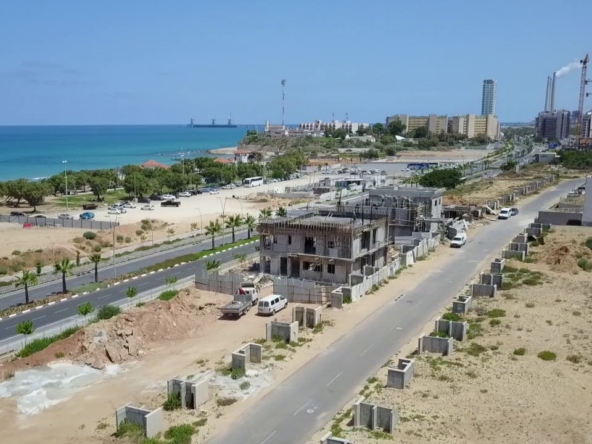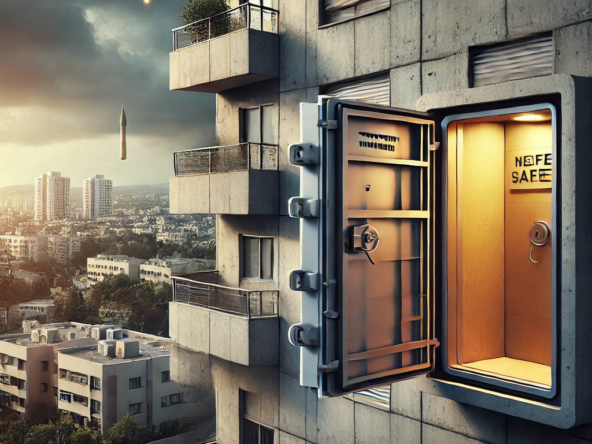Un ”Eter Bniya” is a permit to modify a given property in accordance with the planning and construction law and the construction rights outlined in the construction plan. In other words, if you want to modify your house/apartment and it requires a building permit (for example, if you want to build on the roof), you should contact the local planning and construction committee (which generally applies a plan approved by an architect), and then wait for its approval. The approval is granted based on the law, the specific application, and the region in general (taking into account any opposition).
The building permit is an official document that includes the building plans, a measurement map, and approval from authorized authorities and organizations, and includes the contact details of those responsible for planning, construction, and construction oversight. It is important to understand that it is impossible to build without such a permit; construction or use without a permit, or contrary to the permit, is a criminal offense.
Do you always need a permit?
According to the law, a permit application must be submitted in certain situations, including: the construction of a new building, the demolition of a building, or its restoration. Additionally, any addition to the existing building, which can be an exterior window, a balcony, a covered parking area, a fence, a pergola, a shed, an existing terrace roof (even if the wall is made of lightweight materials). This change does not require a permit unless it affects the size of the apartment or harms the common structure of the building, which in most cases is the vast majority, but there are also exceptional cases that fall under the definition of a building permit. Construction is necessary in any situation where the use exceeds what was previously approved (with the valid building permit).
Everything else is not a years-long project. The Ministry of Housing and Construction has made things easier in recent years, and they update that, in certain cases, it is possible to apply for a permit with limited work, making the process faster.
When do you obtain a building permit?
In cases where there is a significant deviation from the construction plan in the area, it is not possible to obtain a building permit. But what constitutes a significant deviation? It essentially involves a request that differs from the existing plan, for example, a change in zoning designation or a request for construction rights that go beyond the rights outlined in the plan. In such cases, a change of plan is necessary in order to obtain a permit. That is to say, you must request a plan to modify the scheme, a longer process and a “larger” request, and then apply for the building permit.
But how to proceed? What to do? Who applies for a building permit? Then, the address is that indicated in the local planning and construction committee. This request is not a simple procedure and involves several steps.
First step – submission of the application
The application must be submitted, according to the law, by an architect, a structural engineer, or a building engineer. The application includes many details, including: definition of the building’s use, details of the construction materials to be used, calculation of construction percentages and building areas, as well as the requested concessions.
The application includes important annexes, including the construction plan/explanations on the required modifications, and of course a confirmation of ownership of the property. It is possible to attach a copy of the taboo or the approval of rights from the Israeli Land Authority (or the mortgage credit company).
Second step – The technical test
The committee checks whether all documents have been correctly submitted. This is a technical examination, and in case of irregularities, the application is returned to the applicants for completion/additions.
If the application has passed the technical test phase, the amount of the financial advance that the applicant is required to pay is determined. After making the payment, the application goes for inspection by the committee’s engineer.
Third step – Engineer verification
The committee’s engineer reviews the application to determine whether it meets the requirements of the law and regulations. If he decides to do so, the local committee discusses the application and recommends granting a building permit. However, if the engineer claims that the application does not meet the requirements, he writes it down and submits the arguments along with the application to the applicant. By the way, during his review, the engineer sometimes contacts the applicant to receive additional information, explanations, and details about the drawings/maps, etc., and the regulations.
It is also possible to oppose it. The local planning and construction committee allows those who consider themselves harmed by the plan to submit objections. Objections are submitted within 14 days of the last publication date. The appeals committee can appeal the decision of the local committee within 30 days. If there is opposition, it is up to the committee to hear the objections; if there are no objections, the application will be forwarded to the licensing authority.
The next step – Discussion of the application in the local committee
The next step is a discussion within the local planning and construction committee. It is important to understand that each local authority has its own conditions for obtaining a permit. It is very heterogeneous; it depends on the region, the permit, the structure. In practice, it is possible that a building permit was received in one place and in a very different place.
The local committee approves or rejects the application and may also make it conditional. The committee’s decision is communicated to the applicant. If the opinion is positive, the building permit is approved, and the applicant will then be required to pay fees and taxes (including the betterment tax). After payment, the building permit or eter bniya will be issued and will be valid for 3 years from the date of its issuance.
Suppose that it does not go well and the committee opposed the building permit. In such a situation, the applicant can file an appeal within 30 days from the date of the decision. But the appeal must include additional/new grounds that “attack” the committee’s decision. Resubmitting the material will not help; new arguments and explanations are needed to convince the committee of the importance of the building permit.


